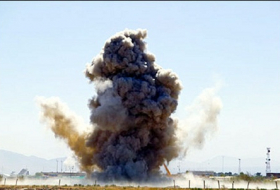Astrophysicists used to think that the Milky Way’s followers were a little strange, because many of them acted a lot like planets around a sun—orbiting our galaxy in a plane, perpendicular to the distinctive spiral.
If the dwarf galaxies were following the standard model of cosmology—a theory which underpins most of our understandings of how the universe was formed—they should have been all over the place, scattered around our galaxy’s perimeter like autograph seekers mobbing a TV star, not arrayed in an orderly line, like a string of bodyguards.
Then researchers noticed that Andromeda also had dwarf galaxies arrayed in a plane around its center. Still weird, they thought, but maybe these two were just outliers.
But now, a study published in Science suggests that these patterns might not be as odd as they first appeared. A similar row of dwarf galaxies was discovered in 2015 around Centaurus A, a galaxy 13 million light years away.
With three galaxies all showing signs of a similar pattern, cosmologists are trying to figure out how to reconcile new observations with established theories.
“We showed that these structures are more common that we thought. Until now it was thought that, okay, this is just a peculiar thing around the Milky Way and Andromeda. But now we show that these things show up in other isolated systems. So now we need an explanation for this kind of structure,” says Oliver Müller, the lead author of the paper. “I’m excited to see what people will come up with now to explain it.”
There are a few ideas being tossed around trying to understand what might be happening around these larger galaxies. Some of the theories focus on the idea of tidal forces in the formless void of space.
“If we have interaction between two bigger galaxies, then in this interaction there will be some bridges or tidal bridges [between the galaxies]," Müller says. "The gravity of the larger galaxy will just rip out stars and gas similar to the gravity of the moon, which makes the tides on the Earth.” The resulting dwarf galaxies would orbit the larger ones in a plane and along the same direction, similar to what Müller and colleagues observed.
But researchers have no idea how long these tidal dwarf galaxies would last after a collision, and that does have implications for cosmology. “The thing about tidal dwarf galaxies is that we don’t know how long they live. Can they be stable? This is in contrast to the standard model, where we think that the dwarf galaxies are the building blocks of the universe—they are the first galaxies that are created and they merge [to form larger galaxies], so they are the oldest objects. But with tidal dwarf galaxies, they would be the youngest objects,” Müller says.
Going from building block to the afterthought is a lot to reconcile.
“People think we have detected dark matter, but dark matter is only a hypothesis,” Müller says. “We are still looking for it.”
Dark matter is a critical component of the standard model, helping to explain the gravitational pull between objects in the universe, which can’t be explained by the visible matter in the universe.
This article appeared on popsci.com.
More about: galaxy
















































